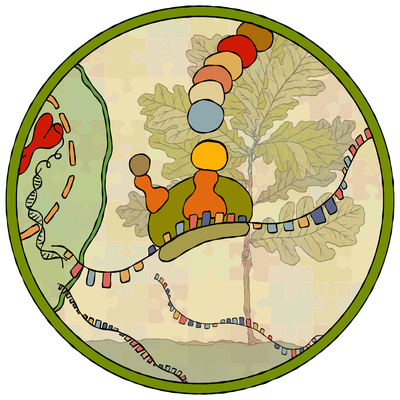Main Content
Subproject 2 - Holobiont acclimation and adaptation to global change as revealed by the transcriptome

Marie-Lara Bouffaud
Long-lived trees face various ecological changes and stress events, which may have extreme amplitudes, and they have to adjust their physiology and gene regulation throughout their lifetime to respond to changing conditions. At the same time, our understanding on the importance of microbes and their interaction with trees in relation to their acclimation and adaptation (A&A) is significantly growing. Plants are intimately connected with their microbial partners and form the holobiont, which should be considered in order to understand forest ecosystem functioning. Thus, there is an urgent need of joining expertise not only at plant or at microbial level but on the holobiont for understanding its role in the adaptations of trees to global change.
The application is part of the Research Unit PhytOakMeter, where we focus on Pedunculate oak (Quercus robur L.) and use the opportunity to study a non-model tree at molecular level given by the in vitro propagated common oak clone DF159. The specific focus of this proposal is to decipher the respective contribution of the holobiont partners, i.e. the plant and its associated microbes, to A&A to global change. To meet this overarching objective, the holobiont transcriptome will be investigated in all experimental platforms: (1) the Ecotron Experiments with saplings exposed to drought and herbivory under controlled experimental conditions (2) Canopy Exposure Experiment, where saplings are placed within the canopy of mature oak trees to compare their responses to contrasting micro-climatic conditions and drought and (3) Oak Phytometer Field Monitoring with trees under diverging field conditions across Europe. The holobiont analyses will tackle both the gene expression of the oak in roots and leaves and of the microorganisms in the rhizosphere. By integrating the results obtained from the different experimental platforms, we aim to get a founded view on the regulative pathways used by the tree holobiont in face of environmental changes and stress events.





